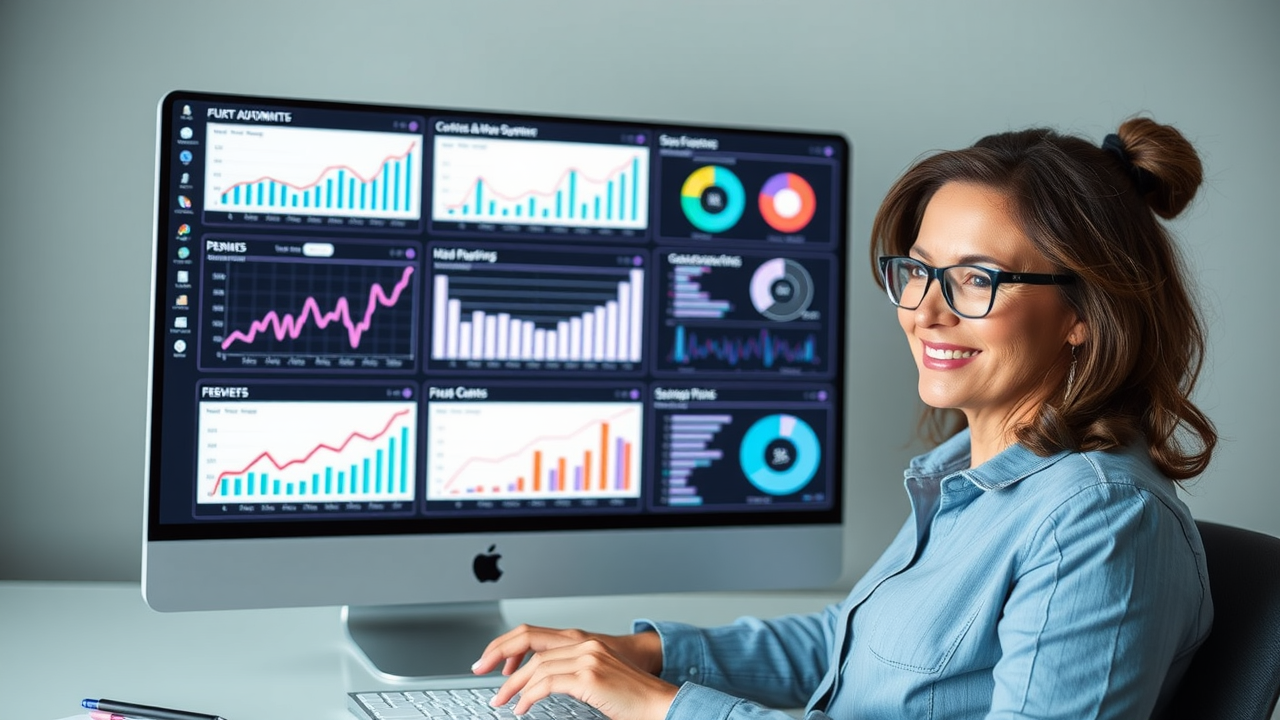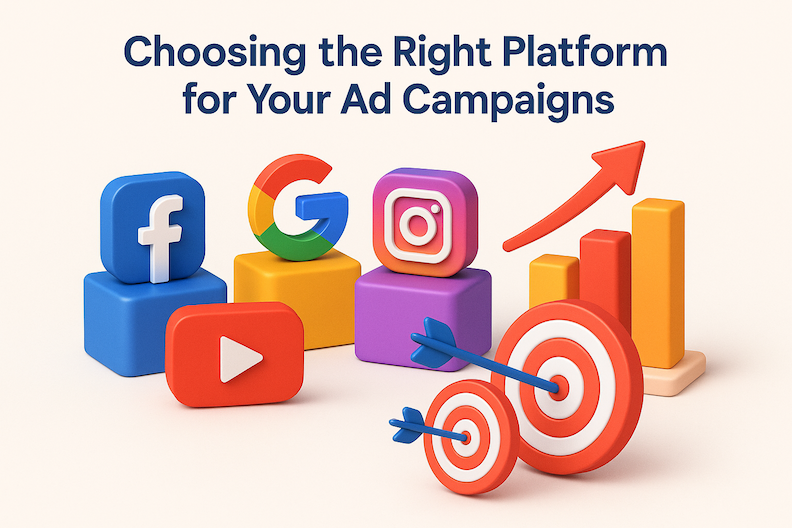
Did you know that over 70% of small businesses fail to reach their marketing goals due to ineffective advertising? Discover how to be among the 30% that succeed with this comprehensive advertising guide for small business.
Advertising Guide for Small Business: Building a Winning Foundation for Success
The essentials of business advertising for small businesses
How to maximize brand awareness using digital and traditional marketing
Smart strategies for targeting your ideal audience
Actionable steps for integrating marketing tools and channels
Proven tactics from top business marketing campaigns

Understanding Today’s Small Business Advertising Landscape
Why Small Businesses Need a Solid Business Advertising Strategy
Success in today's highly competitive marketplace demands more than simply offering great products or services—it requires a solid business advertising strategy. Without a focused plan, small businesses risk falling short of their marketing goals and being overlooked by potential customers . A comprehensive advertising guide for small business helps business owners clarify objectives, stay consistent, and make the most out of every marketing dollar spent.
For small business owners, a clear advertising strategy translates to increased brand awareness, stronger engagement, and more consistent results. Understanding how to leverage both digital advertising avenues and traditional channels enables businesses to capture a wider audience. As the modern consumer becomes even more inundated with brand messages, a deliberate marketing strategy ensures your voice stands out among the competition.
Remember, it's not just about being seen—it's about being seen by the right audience at the right time, in the right way. When small businesses commit to building a strong advertising foundation, they set themselves up to thrive, not just survive, in any market condition.
Top Trends in Small Business Marketing and Media Marketing
The world of small business marketing is evolving faster than ever. Business advertising now goes far beyond local flyers or newspaper ads. Today, media marketing involves harnessing the power of social media platforms , targeted paid ad campaigns, and niche content marketing strategies. These tools allow business owners to reach a precisely defined target audience, track their behaviors, and tailor messaging for maximum impact.
Social platforms such as Facebook, Instagram, and TikTok provide innovative ways to boost brand awareness through visual storytelling, video content, and influencer partnerships. At the same time, search engine optimization (SEO) and search engine ads through platforms like Google and Bing ensure small businesses show up right where potential customers are searching for solutions. Integrating these digital innovations with time-tested media ad methods, such as direct mail and print ads, creates a marketing mix that resonates both online and offline.
As you explore the latest digital advertising trends, consider how display ads can help you reach more customers on high-traffic paid ad websites. For practical insights on expanding your online presence, check out this guide on using display ads to connect with new audiences .
Critical Stats: Small Businesses and Brand Awareness Today
The digital transformation has made measurable brand awareness more essential—and more accessible—than ever. According to recent marketing studies, over 90% of consumers search for local businesses online. However, only about 50% of small businesses actively invest in online advertising, leaving significant opportunities for those ready to step up their business marketing game.
Another striking statistic: businesses that combine digital and traditional advertising can experience revenue growth rates up to 30% higher than those sticking to a single channel. Meanwhile, surveys reveal that consistent brand messaging increases revenue by up to 23%. The bottom line is clear: small business advertising that is strategic and multi-channeled drives better results, deeper customer loyalty, and sustainable competitive advantage.
Comparison of Advertising Channels for Small Business: Cost vs. Effectiveness |
||||
Channel |
Average Cost |
Reach |
Effectiveness |
Example |
|---|---|---|---|---|
Social Media Ads |
Low to Medium |
Local, Regional, Global |
High (for engagement & targeting) |
Facebook Ads, Instagram Stories |
Search Engine (Google/Bing) |
Medium |
Global, Intent-Based |
Very High (for purchase intent) |
Google Ads, Bing Ads |
Direct Mail |
Medium |
Hyper-local |
Moderate (good for conversion) |
Postcards, Flyers |
Print Ad |
Low to High |
Local/Niche |
Low-Moderate (highly targeted) |
Local Magazines, Newspapers |
Email Marketing |
Low |
Opt-in, Owned Audience |
Very High (for repeat customers) |
Email Newsletters, Promotions |

Key Elements of a Strong Advertising Guide for Small Business
Identifying Your Small Business Target Audience
Every effective advertising guide for small business begins with a clear focus on the target audience . Knowing who you want to reach allows you to craft messages and select marketing channels that generate the highest impact. This step involves creating detailed customer personas based on demographics, interests, online behavior, and purchasing habits.
Small business owners must take the time to research their market, using tools such as Google Analytics, Facebook Insights, and customer surveys. Understanding your audience empowers you to personalize your business marketing material and ensures that investment in paid or organic media platforms delivers actual results. Pinpointing your target customers also helps avoid wasted spend on broad or generic business advertising .
Crafting Your Brand Message for Maximum Business Marketing Impact
Your brand message is the anchor for all small business marketing communications. Whether you’re using digital media marketing or traditional print ad tactics, your message must convey what makes your products or services unique. Develop a brand story that resonates with your target audience , using clear, authentic language that answers their needs.
To maximize brand awareness , every touchpoint—from website copy to social media and email marketing —should echo your central promise and values. Consistency in tone, imagery, and value proposition builds trust and helps your small business stand out in the competitive market. Regularly update and align your messaging with customer feedback and changing trends to ensure ongoing relevance.

Allocating Your Advertising Budget as a Small Business Owner
Budgeting is a critical—and often daunting—aspect of small business advertising . It’s essential to strike the right balance between ambitious growth and responsible spending. Experts suggest allocating 7–10% of gross revenue to marketing, adjusting as needed for industry and growth stage. Start by covering the essentials (branding, website, core ads), then allocate additional funds to test newer channels or campaigns.
Diversifying your spend across digital and traditional channels maximizes reach and flexibility. Track performance closely and be ready to reallocate resources from underperforming areas to those that drive results. Investing wisely in the right marketing tools can also provide automation and analytics capabilities, freeing you to focus on core business operations while still scaling brand awareness .
Sample Budget Breakdown for Small Business Advertising Methods |
||
Advertising Method |
Budget % |
Purpose |
|---|---|---|
Social Media |
20% |
Brand awareness, engagement |
Search Engine Ads |
20% |
Lead generation & conversions |
Content Marketing |
15% |
Expertise, SEO, retention |
Direct Mail & Print |
15% |
Local reach, older audiences |
Email Marketing |
10% |
Retention, repeat sales |
Other (Events, Sponsorships) |
20% |
Community, networking, referrals |
"The best advertising doesn’t feel like advertising." – Tom Fishburne, Marketoonist
Digital Business Advertising Strategies for Small Businesses
Leveraging Social Media Marketing for Small Business Growth
Social media marketing stands out as one of the most powerful tools for small business owners . Platforms like Facebook, Instagram, LinkedIn, and TikTok provide cost-effective ways to build brand awareness , engage potential customers directly, and even facilitate sales through integrated shopping features.
Since most consumers now research brands on social media platforms , posting consistent, authentic content and responding promptly to inquiries is vital. Paid social campaigns let you target users by demographics, interests, or online behavior—ensuring your message reaches those most likely to buy. Don’t forget about using analytics tools to measure engagement, track trends, and adapt your strategy for continued growth.

Search Engine Advertising: Making Google & Bing Work For Your Small Business
Search engine advertising, particularly via Google Ads and Bing, brings your business marketing directly to consumers searching for your products or services. With pay-per-click (PPC) models, you control spending while gaining access to highly intent-driven audiences. Platforms like Google let you run text, display, or even local service ads, reaching users precisely when they’re ready to act.
Effective search engine campaigns use keyword research, compelling ad copy, and well-designed landing pages. Small businesses that optimize for mobile and track outcomes with Google Analytics or similar tools often see higher ROI. The flexibility of tools such as retargeting ads also means you can stay on a customer's radar until they convert.
Content Marketing Techniques for Business Owners
Content marketing is foundational for any comprehensive advertising guide for small business . Creating valuable blog posts, videos, guides, and social content helps position your business as an expert, attracts organic traffic, and encourages sharing across media platforms. Useful, informative content also builds trust and increases the likelihood of repeat visitors.
Small business owners should focus on creating content that answers customer questions, solves problems, or entertains their audience. Optimizing this material for search engines magnifies visibility in local search results. Great content marketing complements digital ads and social media campaigns, making every marketing dollar more effective.

Effective Email Marketing for Small Business Advertising
Email marketing remains a powerful tool for nurturing leads, engaging loyal customers, and maintaining direct communication. For small businesses , well-designed email campaigns keep your brand top-of-mind, promote new products and services , and encourage repeat purchases. Since these messages go directly to interested recipients, email is particularly effective at driving conversions.
Business owners should segment their emails to address individual customer needs, monitor open and click rates, and regularly refresh offers to maintain interest. Integrated with a CRM or marketing automation platform, email marketing can be scaled with minimal ongoing effort, making it a smart component of any balanced marketing strategy.
Utilizing Paid Ad and Media Ad for Brand Awareness
Leveraging paid ad and media ad opportunities expands your reach quickly across search, social, and other digital networks. Display ads, sponsored content, and retargeting allow small business advertising to hit their target audience multiple times—essential for achieving the “Rule of 7” in modern marketing.
Advertising across multiple media platforms diversifies risk and maximizes visibility during key promotions or launches. Step-by-step reporting offered by most paid ad systems ensures you can clearly assess which creative formats, target settings, and messages produce the strongest ROI, letting you fine-tune for ongoing success.
Top tools for digital media marketing:
Google Ads
Meta for Business
MailChimp
Canva for Content Creation
Hootsuite for Social Scheduling
Traditional Business Advertising Methods Still Driving Results
Direct Mail and Mail Marketing for Local Small Business Reach
Direct mail and mail marketing are far from obsolete in the digital age. These tactile forms of business advertising offer a way to reach hyper-local audiences, deliver personalized promotions, and drive direct action via postcards, flyers, and catalogs. For small business promotions, direct mail can see response rates up to five times higher than digital-only campaigns —especially when targeting specific neighborhoods or customer segments.
Integrating direct mail with campaign-specific landing pages, QR codes, or personalized discounts increases measurement and ROI. As digital inboxes become more crowded, physical mail can stand out, reinforce your brand awareness , and drive foot traffic for local retailers or service providers.

Print and Media Ad Channels: When Offline Still Works for Small Businesses
Traditional print ad and media ad channels still play a vital role for many small businesses , especially those serving niche or local communities. Ads in regional newspapers, industry magazines, and community bulletins help reinforce your local presence and credibility among specific demographics.
While print can be more expensive than some digital options, its tangibility provides higher memorability and trust. Strategic placements, such as sponsoring a local publication or advertising in a special-interest print newsletter, allow for more impactful consumer touchpoints. Many businesses combine print and digital by including URLs, hashtags, or QR codes to drive readers online.

Local Events, Sponsorships, and Word-of-Mouth as Proven Small Business Marketing Tactics
Engaging with your community through local events, sponsorships, and word-of-mouth campaigns remains one of the most authentic and effective means of small business marketing . Hosting events, partnering with nonprofits, or sponsoring youth sports all help build positive brand recognition and foster loyalty beyond what’s possible with paid ad alone.
Referrals—bolstered by incentive programs—leverage satisfied customers as enthusiastic advocates. A strong local presence encourages organic buzz, often outperforming even the best-targeted digital efforts for hyper-local businesses or those launching new offerings. Integrating event promotion with digital channels increases awareness and turnout.
Pros and Cons: Traditional vs. Digital Advertising for Small Business |
||
Method |
Pros |
Cons |
|---|---|---|
Traditional (Print, Mail, Events) |
Broad local impact, tangible, trusted, great for specific audiences |
Costly, hard to measure, slower feedback |
Digital (Social, Search, Email) |
Targeted, low-cost, measurable, instant feedback, scalable |
Highly competitive, requires tech skills, can be ignored |
Integrating Multi-Channel Marketing Tools for Small Business Owners
Choosing the Right Marketing Tools to Automate and Optimize Business Advertising
The best advertising guide for small business encourages using marketing tools that save time and improve performance. Automation software enables you to schedule posts, manage ads, segment email lists, and analyze campaign results—all from a single dashboard. Popular solutions like Hootsuite, HubSpot, and MailChimp eliminate manual labor and ensure consistent execution across all channels.
As your business grows, investing in scalable marketing tools helps streamline campaign management, improve collaboration, and generate actionable insights. Select solutions based on ease of use, integration with existing systems, and cost to maximize utility without overextending your budget. The right tools empower you to focus more on strategy and growth while the software handles the routine.

How to Align Your Content Marketing, Social Media, and Direct Mail Strategies
True marketing synergy comes from aligning efforts across content marketing , social media , and direct mail . Each channel amplifies the other when strategies, branding, and offers remain consistent. Begin any campaign with a central message, then tailor content to each channel’s unique strengths—short updates for social media, in-depth guides for your blog, and quick-hit promotions for mail campaigns.
Coordinated scheduling ensures your target audience encounters reinforcing messages at every touchpoint, moving them closer to conversion. Shared themes, visuals, and calls-to-action unify your campaigns and boost recall, regardless of where your customers connect with your brand.
Tracking, Analytics, and Metrics Every Small Business Owner Must Monitor
Effective small business advertising relies on data-driven decisions. Business owners must regularly monitor analytics metrics such as click-through rates, conversion rates, cost per lead, and return on ad spend. Most digital platforms—like Google Analytics and Facebook Insights—offer real-time tracking and custom reporting dashboards.
Setting clear benchmarks allows for objective evaluation and quick pivoting if a campaign underperforms. Tracking offline results is equally important; use unique promo codes or trackable phone numbers to measure the impact of print, mail, or event-based campaigns. The more information you gather, the more agile and effective your overall business advertising becomes.
Measuring Marketing Success in Small Business Advertising
Key Performance Indicators (KPIs) for Small Business Marketing
Tracking the right KPIs is essential to gauge the effectiveness of your advertising guide for small business . Core metrics include website traffic, lead conversion rates, cost per acquisition, customer lifetime value, and return on ad spend. Engagement rates on social media and open/click rates in email marketing are also key performance signals.
Regularly reviewing these numbers highlights which marketing efforts are thriving—and which need revision. When KPIs trend positively, double down on successful tactics; when numbers falter, reassess your approach and experiment with new creative or channels. Ongoing measurement ensures every marketing dollar delivers maximum results.

Calculating ROI from Business Marketing and Advertising Efforts
Understanding the return on investment (ROI) for business advertising efforts is vital for long-term success. ROI is calculated by dividing net profit generated by a marketing effort by the total spent on that effort. This figure helps small business owners identify which channels provide the best financial outcomes.
Use a combination of sales tracking, coupon codes, custom landing pages, and analytics platforms like Google Analytics to monitor campaign success. If certain campaigns consistently outperform, shift more budget there; if others fail to show clear returns, eliminate or radically revise them.
Adapting Advertising Strategies Based on Data
Data is your blueprint for evolution. Business owners who actively adapt their strategies based on performance insights outpace the competition. Conduct A/B tests, trial different campaign timing, and refresh your creative elements regularly. Remain agile and never hesitate to make big changes based on what the data reveals.
Continuous optimization ensures your small business advertising remains relevant, impactful, and cost-efficient as market trends and consumer behaviors shift.
Expert Tips: Maximizing Results with Your Advertising Guide for Small Business
Quick tips for business owners:
Always test ads and visuals on a small audience first
Refresh creative content to maintain brand awareness
Keep your messaging consistent across channels
Incentivize referrals for greater word-of-mouth marketing
"A business with no sign is a sign of no business." – Old Advertising Proverb
People Also Ask: Insights for Small Businesses on Advertising
What is the best advertising method for small business?
The best advertising method for a small business depends on industry, audience, and budget. Generally, a blend of social media marketing , local SEO, and direct mail campaigns delivers strong results, maximizing brand awareness and ROI for business owners .
What are the 5 M's of advertising?
The 5 M’s are Mission, Money, Message, Media, and Measurement. By following these pillars, small businesses can build a strategic, measurable, and sustainable approach to business advertising .
What is the rule of 7 in advertising?
The Rule of 7 states that a potential customer needs to see or hear your advertising message at least seven times before taking action. Consistency across small business marketing channels is vital to achieving this threshold.
How much can a small business write off for advertising?
Advertising expenses are generally 100% tax-deductible for small businesses , as long as the spending is ordinary and necessary for business promotion in line with IRS rules.
Frequently Asked Questions: Small Business Advertising Guide
What’s the first advertising step for a business owner? – Audit your current target audience, review your unique value proposition, and outline clear business goals before launching any campaigns.
How can social media marketing be affordable for small businesses? – Focus on organic growth, leverage free social tools, and start with small paid ad budgets for precise targeting and A/B testing.
When should a small business switch from print to digital advertising? – Transition when your target demographic spends more time online, when ROI from print declines, or when scaling requires greater measurement and flexibility.
Master the Art: Your Next Move Using the Advertising Guide for Small Business
Steps to take today:
Audit your current business advertising mix
Identify quick wins in social media and local marketing
Invest in a marketing tool that fits your scale
Experiment, track, and optimize—repeat for success
Summary and Final Takeaways for Small Business Owners
Use this advertising guide for small business as your blueprint
Start with your target audience and clear goals
Integrate digital and traditional business advertising
Always measure, analyze, and iterate
Begin Winning: Put This Advertising Guide for Small Business Into Action Today
"Success in business advertising comes not from spending the most, but from making every dollar count. Now is your moment to win."
As you put these advertising strategies into practice, remember that building a strong brand reputation is just as crucial as reaching new customers. To take your marketing to the next level, explore how a comprehensive reputation analysis can reveal hidden opportunities and strengthen your business’s credibility. Discover actionable ways to enhance your online presence and customer trust by visiting the Reputation Grader for Small Business . By combining smart advertising with a stellar reputation, you’ll be well-positioned to outpace competitors and achieve lasting growth.
Sources
To enhance your small business advertising efforts, consider exploring these valuable resources:
6 Principles of Small Business Advertising : This guide outlines fundamental advertising principles, including defining your customer, crafting a single message, and creating intriguing advertising.
10 Tips for Advertising Your Small Business Successfully : This resource offers practical advice on creating clear messages, impactful headlines, and utilizing eye-catching imagery to effectively promote your business.
By integrating these strategies, you can develop a robust advertising plan that resonates with your target audience and drives business growth.
 Add Row
Add Row  Add
Add 




Write A Comment